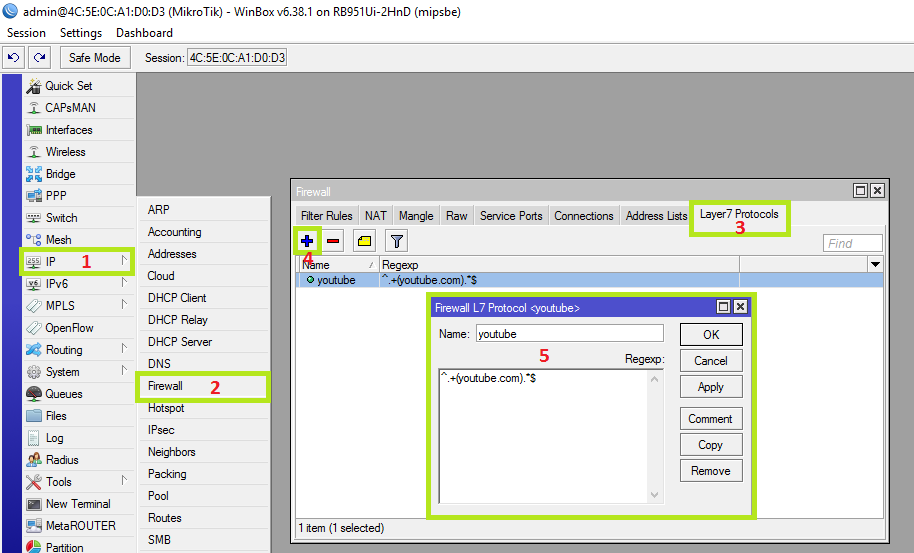

In the general menu, select the outgoing interface “ether 4” as via the internet connected.On the firewall menu, select the NAT menu. settings After setting the DHCP Client, then setting the NAT.It can be observed that the IP DHCP Client is obtained automatically from the ISP. Make sure that the DHCP Client setting is in a bound situation as shown below.Select the interface as a client, namely “ether 4”.Connect the router 4 ethernet cable to the ISP.Interface connected to the local network, namely “ether2”. Then, select which interface will run the DHCP Server.Later, the DHCP Server window will appear, then click DHCP Setup. The next step is setting the DHCP Server.IP address settings on each PC in the Local Area Connection.Add the router IP address on each PC according to the topology.


Once the Layer 7 traffic type has been selected, proceed to the 'Action' tab and define the action of your choice. In the ' Advanced' tab you may now choose the Layer 7 traffic type you would like to block/allow. Go to the 'Filter' tab and add a new Firewall rule. We can now create a firewall rule to block any type of Layer 7 traffic we choose. You should now have a list ofthe most common types of traffic found within a network.

To make sure the script file imported properly, head to the 'IP' -> 'Firewall' menu and go to the 'Layer 7 Protocol' tab. Once you have the script file copied into the 'Files' window we can now proceed to import it via the terminal. We can now copy this script file into the Mikrotik 'Files' list. This can be obtained from the Mikrotik Wiki via the following link : The first step is to get a script file with the list of the most common Layer 7 protocols. Mikrotik Layer 7 Firewall Setup - Layer 7 is the application layer of the OSi system model and allows the Mikrotik router to analyze each and every packet that enters your network, and decide what to do with it.


 0 kommentar(er)
0 kommentar(er)
